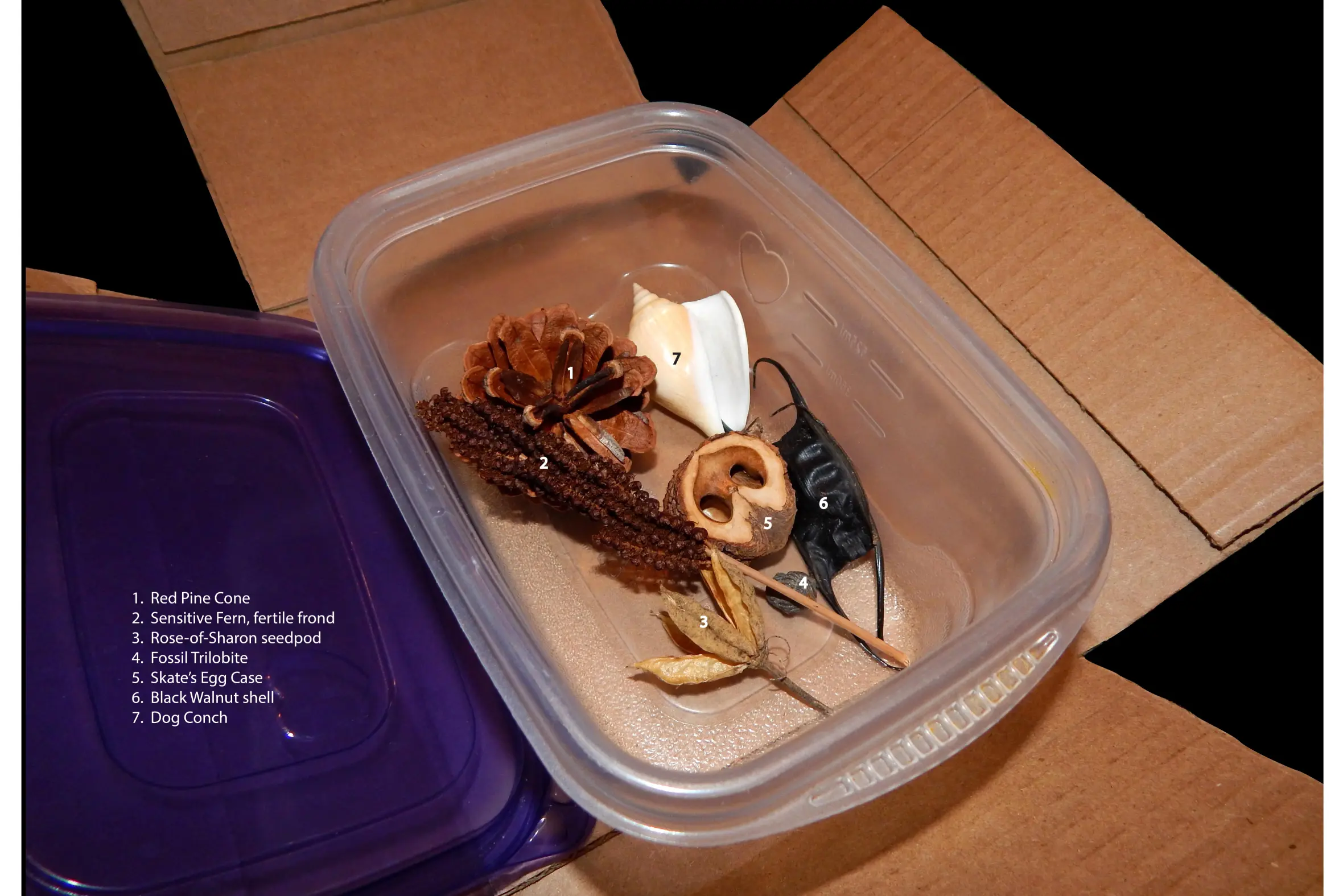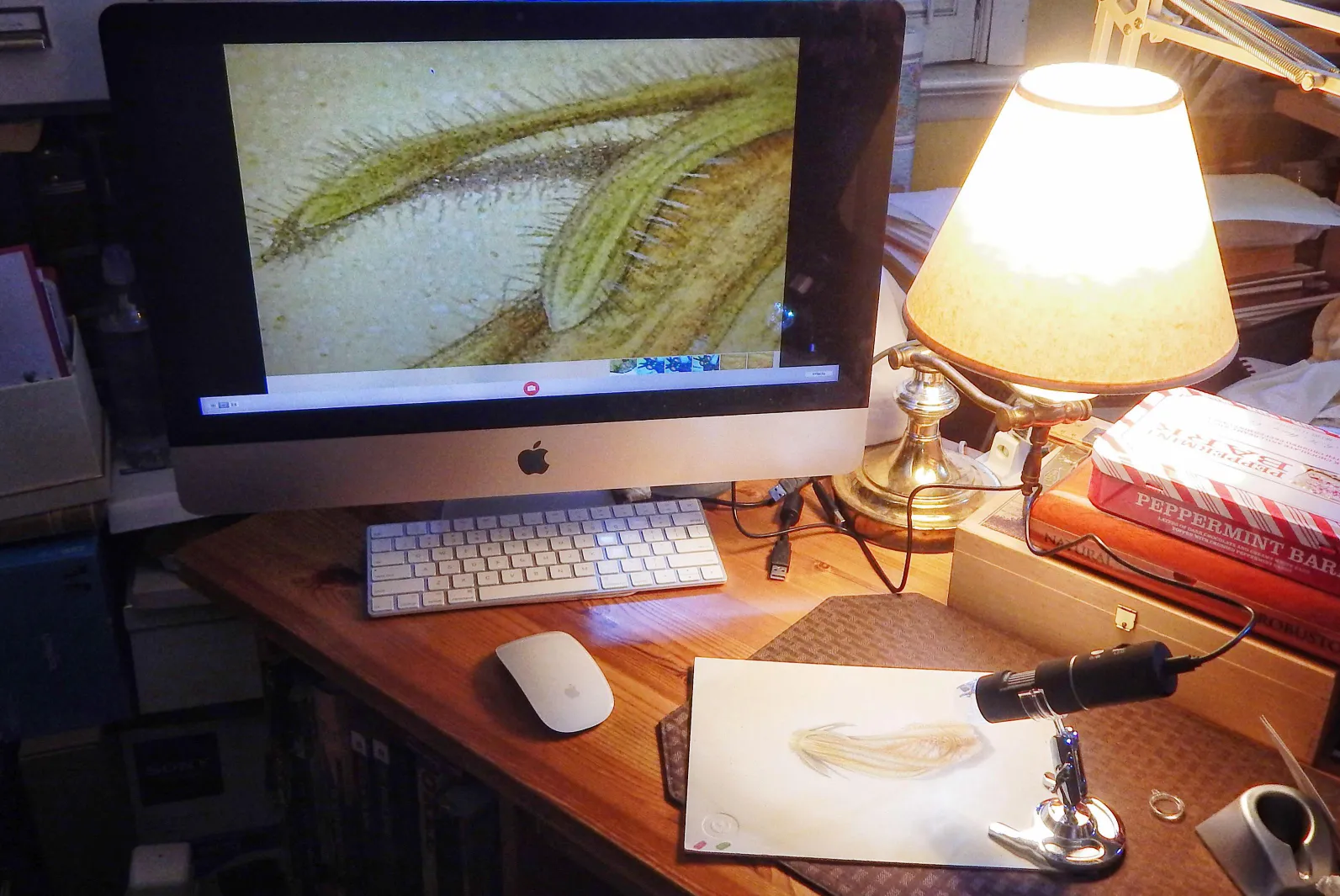Rawlins Prepares for Teaching Scientific Illustration Online

A seashell, a pinecone, the shell of a black walnut, and several other objects are items that students would usually receive in class during Scott Rawlins’ introductory Scientific Illustration course. This year, they are included in mailed kits Rawlins designed for students to develop their Scientific Illustration skills in a fully online format for the Fall semester.
“One of my goals is to try to make sure that the students don’t feel like they’re being cheated in terms of subject accessibility for this particular class,” said Rawlins, a professor emeritus of Art and Design. “Our whole sense of community and the idea of socializing disappears to a great extent if you’re dealing with a computer screen compared to interacting in a classroom, where you can roll your eyes at the person sitting next to you. So I’m trying to duplicate a little bit of that, if I can.”
In addition to the kits, Rawlins has incorporated new technologies into his teaching—some of which he plans to keep when classes resume fully in-person. He’s developed instructional videos to showcase how sketches are transferred and other illustration techniques work; incorporated the use of a handheld digital microscope, so students can see up close the tiny strokes that some illustrations use; and instituted new phone apps, such as the Camera Lucida, which enables students to project an image for tracing.
“I’m trying to make it an exciting experience for the students,” said Rawlins. “You want them to be on your side and be part of your process. I want them to give me suggestions. I’m perfectly willing to entertain better ideas in lieu of anything I might come up with.”

Rawlins has also created virtual field trips so students can learn to look for their own objects of study. Wanting students to engage with their assignments and not just sit in front of a computer screen, Rawlins might ask students to find insects in their natural habitat in order to photograph and illustrate them later. He’ll also ask students to find wild flowers for a lesson on preparing plant specimens for pressing, identifying, and eventually drawing.
“I think as instructors and as a University, the things we’re putting into play for the pandemic are actually really good ideas,” said Rawlins. “It might be in terms of public safety, in terms of pedagogy, in terms of organizing student scheduling, or whatever it might be. Now, I’m thinking about when we get back to normal, what will I keep from what I designed for an online or remote scenario?”

